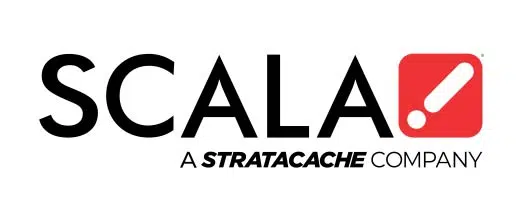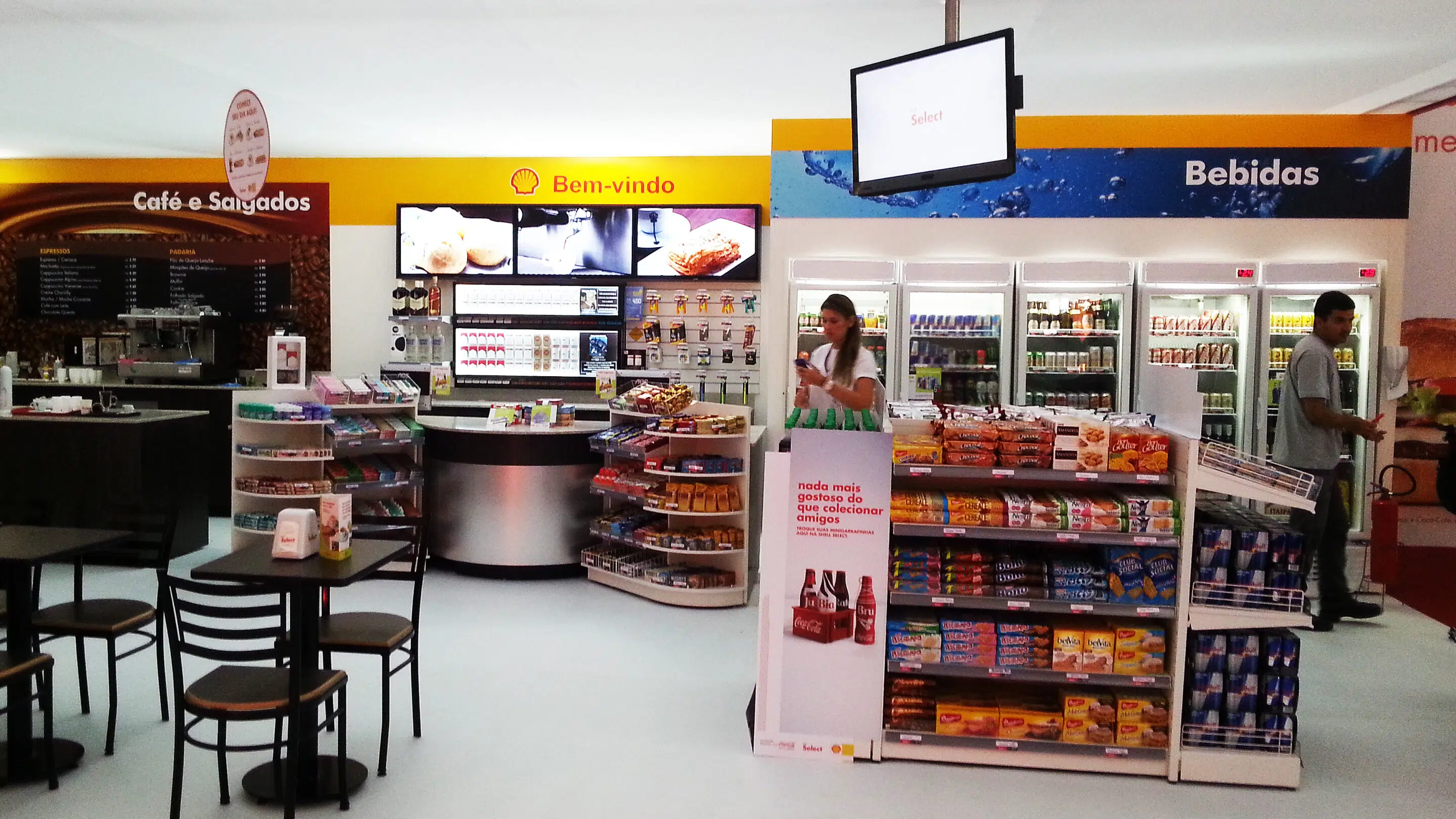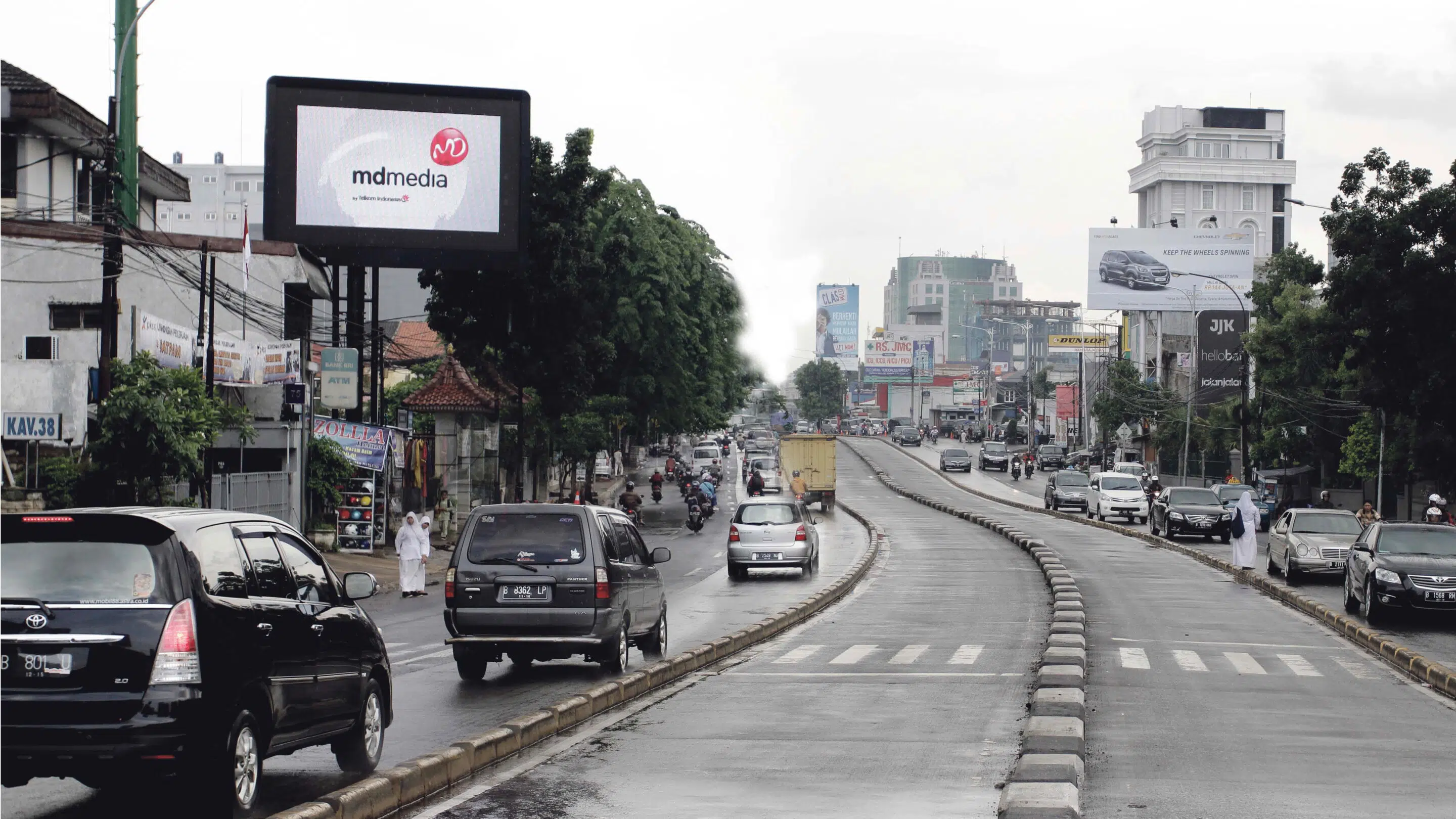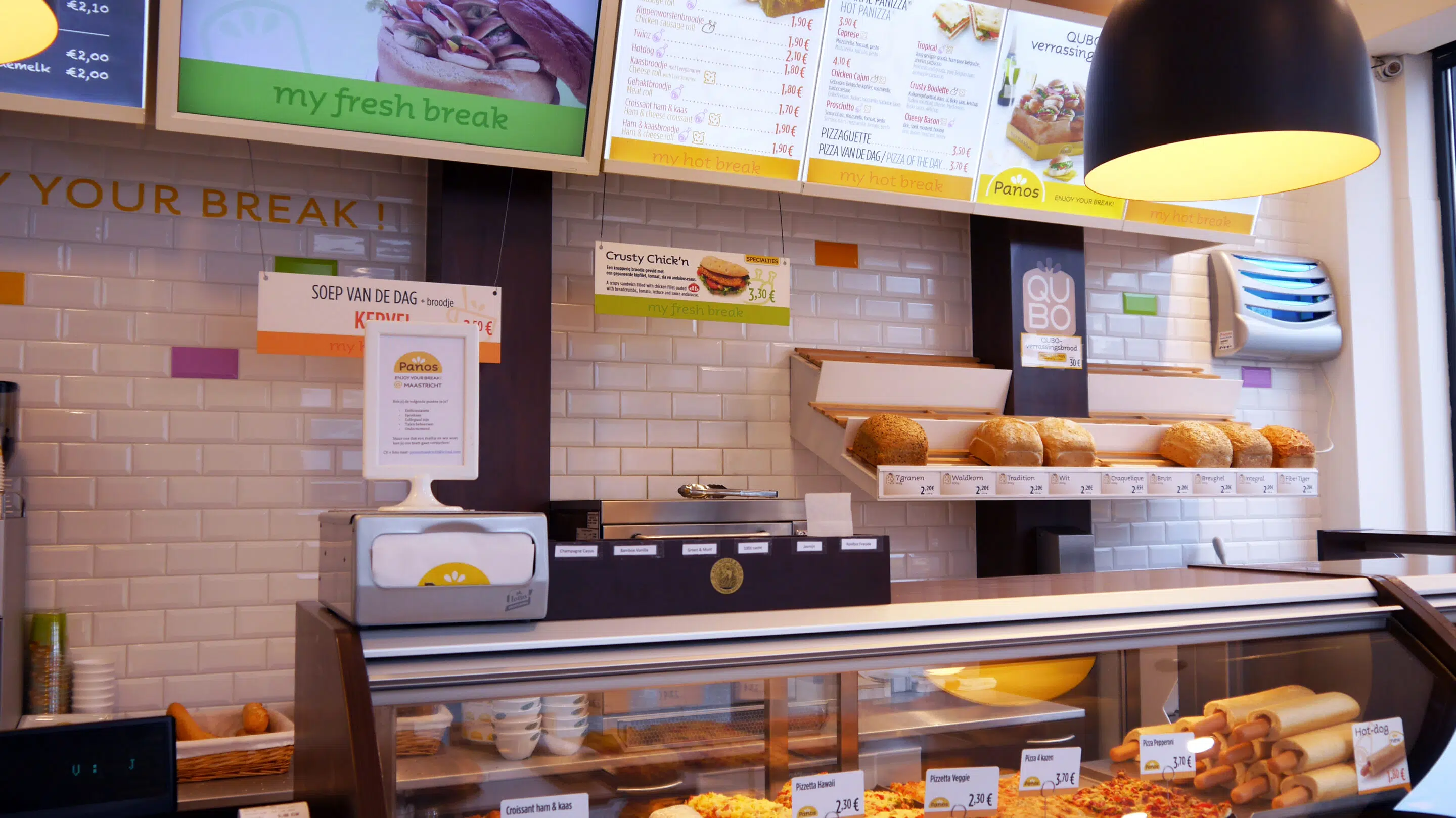Creating a Crucial Integrated Communication System for the Norwegian Fire Station Service
Scala designed an integrated communication system in consultation with the Norwegian Fire Station Service working with Locus.
Project summary
Creating a Crucial Integrated Communication System for the Norwegian Fire Station Service
Scala and Atea worked with Locus Solutions to provide a nationwide network of digital screens for the Norwegian Fire Station Service to give the front-line firefighters the crucial information that they need to save lives.
Project Summary
Scala and Atea worked with Locus Solutions to provide a nationwide network of digital screens for the Norwegian Fire Station Service to give the front-line firefighters the crucial information that they need to save lives.
Goal & Challenge
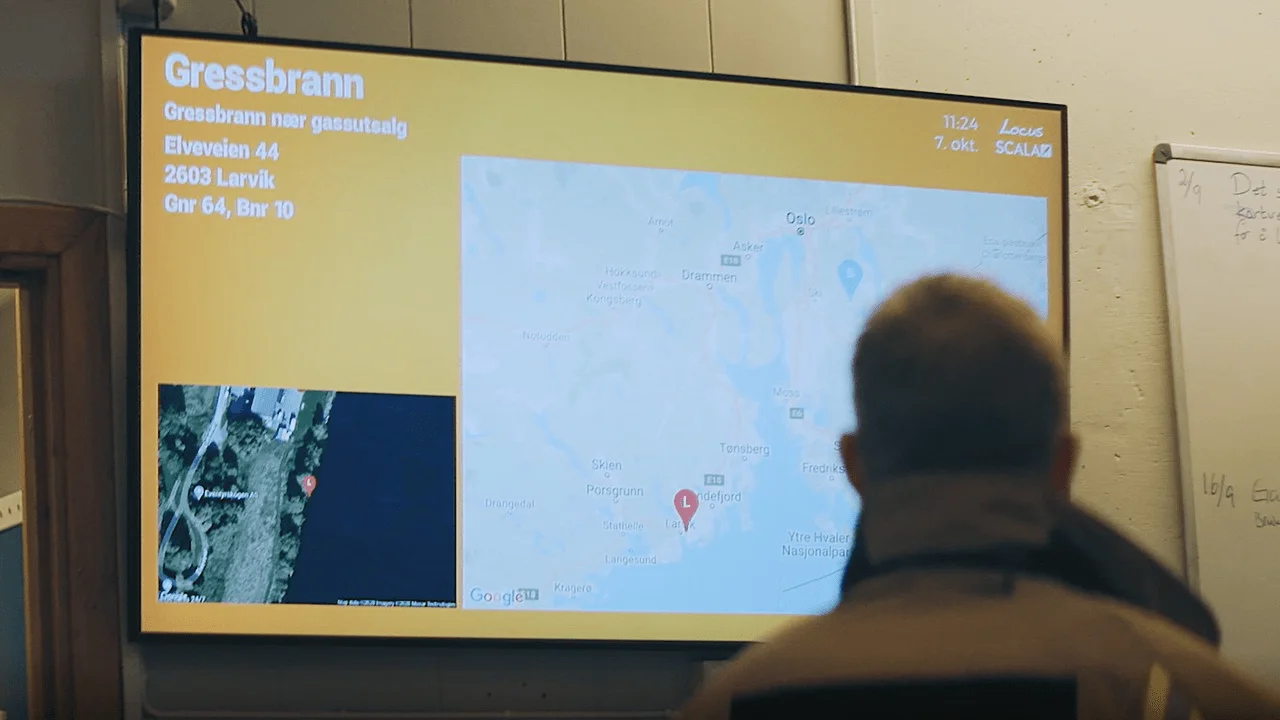
Goal: With every second making a difference, the Norwegian Fire Service required an effective way to … convey crucial information to frontline firefighters. The fire service wanted to employ large-format digital displays to replace a limited legacy system. The designed solution had to be able to collate and clearly display relevant information in real time.
Essential information such as road conditions, wind direction, other buildings in the vicinity of the incident and particulars of the fire, such as the materials which are burning, are all essential to maintain the safety of firefighters and save lives. This information can change in an instant and the Norwegian Fire Station Service required a way to clearly display details as they alter in order to equip their teams creating the best chances for successful and safe deployment.
In addition to showing information related to their own emergency call outs, the Fire Station Service also requested that any call outs to fire stations located nearby which may require the assistance of additional fire stations also be shown as part of the display.
Challenge: The solution had to bring together and present information from a variety of sources in real … time with all of the relevant data displayed in an easy to understand and accessible format. The system also had to be easy enough to install so that it could be installed by the various fire teams across Norway who were working in accordance with Norway’s Covid-19 protocols.
The information required by the fire service originates from a variety of sources such as the emergency services dispatch team, Google Maps, the Norwegian Meteorological Service, Twitter and more. The real-time emergency information was available via Locus and pulled together using Scala technology. The information from all of the data sources need to be curated and displayed quickly and in a manner appropriate to the individual fire station teams.
As the Fire Station Service is a front-line emergency organization, open all day, every day, any designed solution needed to be installed with no disruption as any interruption to service could prove fatal. Installation also took place in part during Norway’s pandemic lockdown so it was decided that where possible, that the firefighters install the technology.

Goal & Challenge
Goal: With every second making a difference, the Norwegian Fire Service required an effective way to convey crucial information to frontline firefighters. The fire service wanted to employ large-format digital displays to replace a limited legacy system. The designed solution had to be able to collate and clearly display relevant information in real time.
Essential information such as road conditions, wind direction, other buildings in the vicinity of the incident and particulars of the fire, such as the materials which are burning, are all essential to maintain the safety of firefighters and save lives. This information can change in an instant and the Norwegian Fire Station Service required a way to clearly display details as they alter in order to equip their teams creating the best chances for successful and safe deployment.
In addition to showing information related to their own emergency call outs, the Fire Station Service also requested that any call outs to fire stations located nearby which may require the assistance of additional fire stations also be shown as part of the display.
Challenge: The solution had to bring together and present information from a variety of sources in real time with all of the relevant data displayed in an easy to understand and accessible format. The system also had to be easy enough to install so that it could be installed by the various fire teams across Norway who were working in accordance with Norway’s Covid-19 protocols.
The information required by the fire service originates from a variety of sources such as the emergency services dispatch team, Google Maps, the Norwegian Meteorological Service, Twitter and more. The real-time emergency information was available via Locus and pulled together using Scala technology. The information from all of the data sources need to be curated and displayed quickly and in a manner appropriate to the individual fire station teams.
As the Fire Station Service is a front-line emergency organization, open all day, every day, any designed solution needed to be installed with no disruption as any interruption to service could prove fatal. Installation also took place in part during Norway’s pandemic lockdown so it was decided that where possible, that the firefighters install the technology.
Solution
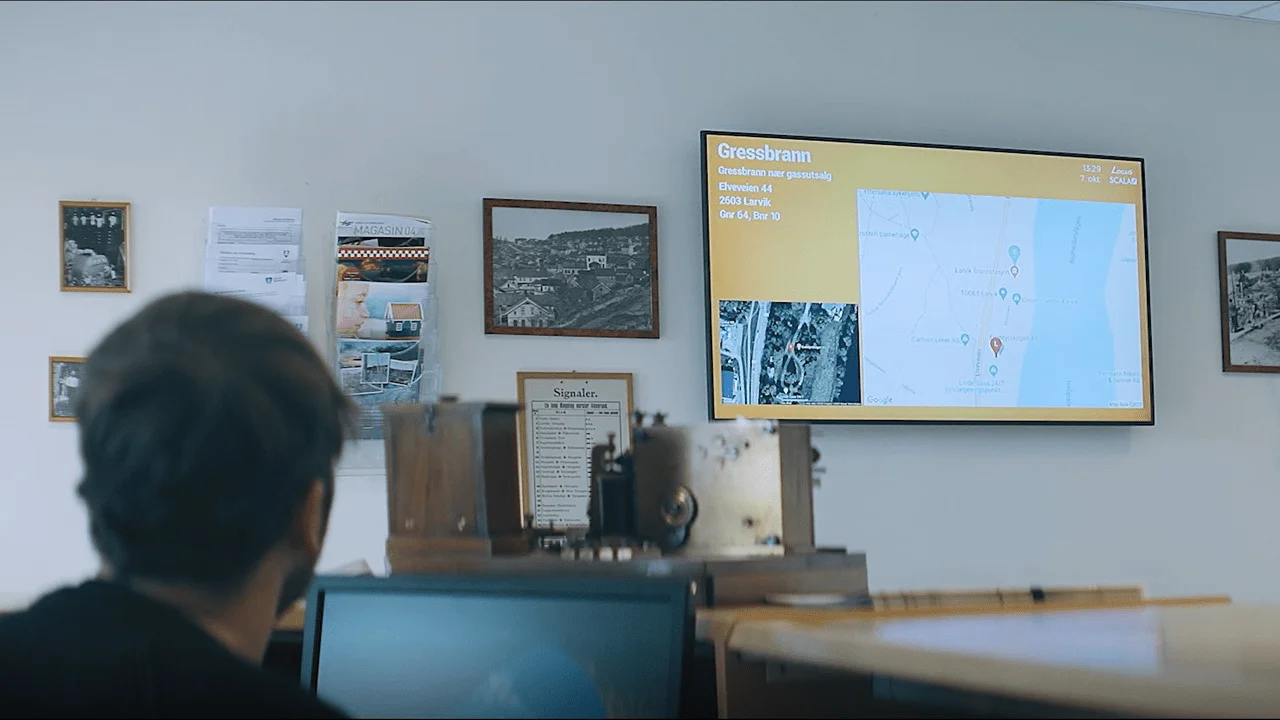
Scala designed an integrated communication system in consultation with the Norwegian Fire Station … Service working with Locus. Talking to front line firefighters, managers and dispatchers, Scala and Locus determined the most relevant information sources for the various teams as well as how to prioritize and best display the information so that the teams could make informed decisions within a matter of seconds.
Scala created a bespoke content manager that integrates the required sources. New information sources can be added to the system as required with a simplified front-end system in the works to allow selected Fire Service team members to add new sources and change the way the content is displayed to best suit their team.
Each fire station can determine their own screen needs by ordering what they require from a web-shop solution created by Atea.
The installation of the solution happened during times determined to be least disruptive to each fire station and coordinated by the firefighters working in each station. The hardware, software, media players and screens were fitted and tested to ensure that no fire station operations were impacted. This was key given the potentially fatal consequences of disrupting the work of those at the fire station.
Solution
Scala designed an integrated communication system in consultation with the Norwegian Fire Station Service working with Locus. Talking to front line firefighters, managers and dispatchers, Scala and Locus determined the most relevant information sources for the various teams as well as how to prioritize and best display the information so that the teams could make informed decisions within a matter of seconds.
Scala created a bespoke content manager that integrates the required sources. New information sources can be added to the system as required with a simplified front-end system in the works to allow selected Fire Service team members to add new sources and change the way the content is displayed to best suit their team.
Each fire station can determine their own screen needs by ordering what they require from a web-shop solution created by Atea.
The installation of the solution happened during times determined to be least disruptive to each fire station and coordinated by the firefighters working in each station. The hardware, software, media players and screens were fitted and tested to ensure that no fire station operations were impacted. This was key given the potentially fatal consequences of disrupting the work of those at the fire station.

Results
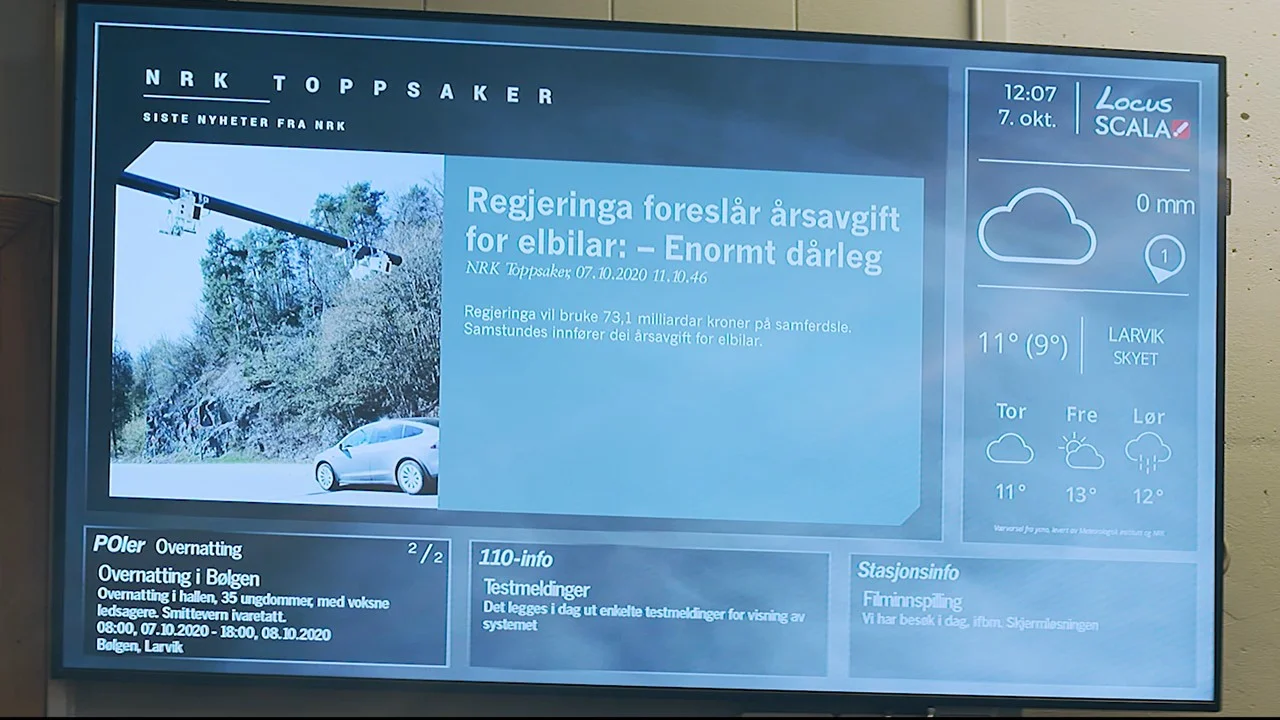
50 Norwegian Fire Service locations have been outfitted to date with further installations planned. … An example of a fire station that has the solution installed, Larvik Fire Station responds to, on average, 650 call outs per year. Since working with the installed Scala solution, those working at the fire station feel more informed when going to an emergency call out and can be better prepared for the situation that they will encounter. In one instance, a firefighter was able to determine in a matter of seconds, from looking at the map information on the display, that there was a risk of the fire spreading to a neighboring building and direct his team to take appropriate action before arriving at the fire. This would not have been possible using the previous information system.
The technology utilized in the Larvik fire station could easily be applied to other emergency service settings or time-sensitive message or item delivery scenarios, such as dispatch centers for transport or grocery or package delivery. Transport hubs such as bus or train stations as well as airports could also benefit from a similar system where displays can show relevant information to the viewer, highlighting updated weather reports, traffic updates, possible sites of interest, promotions and more.

Results
50 Norwegian Fire Service locations have been outfitted to date with further installations planned. An example of a fire station that has the solution installed, Larvik Fire Station responds to, on average, 650 call outs per year. Since working with the installed Scala solution, those working at the fire station feel more informed when going to an emergency call out and can be better prepared for the situation that they will encounter. In one instance, a firefighter was able to determine in a matter of seconds, from looking at the map information on the display, that there was a risk of the fire spreading to a neighboring building and direct his team to take appropriate action before arriving at the fire. This would not have been possible using the previous information system.
The technology utilized in the Larvik fire station could easily be applied to other emergency service settings or time-sensitive message or item delivery scenarios, such as dispatch centers for transport or grocery or package delivery. Transport hubs such as bus or train stations as well as airports could also benefit from a similar system where displays can show relevant information to the viewer, highlighting updated weather reports, traffic updates, possible sites of interest, promotions and more.
Related Case Studies
Related Case Studies
Shell Oil Expanding Successful Digital Signage Installation to 600 Stores Throughout Brazil
Shell Oil Expanding Successful Digital Signage Installation to 600 Stores Throughout Brazil Following an uptick in sales, Shell Selectwill add ten new stores per month as wellas apply the solution to new “Bem Aqui” stores.Project summaryShell Oil Expanding Successful...
Dynamic and Flexible Solutions for PT MD Media’s Digital Advertising Expansion
Dynamic and Flexible Solutions for PT MD Media’s Digital Advertising Expansion PT Metra Digital Media – one of Indonesia’s biggestadvertising agencies, is continuously leveraging thelatest in digital technology to meet markettrends and needs.Project summaryDynamic and...
Digital Signage to Drive Sales and Generate Demonstrable Results at Panos
Digital Signage to Drive Sales and Generate Demonstrable Results at Panos Quick service franchise Panos needed to upgrade its digital signage system. With the help of Prime Products, the QSR turned an existing signage system into a centralised signage network.Project...
